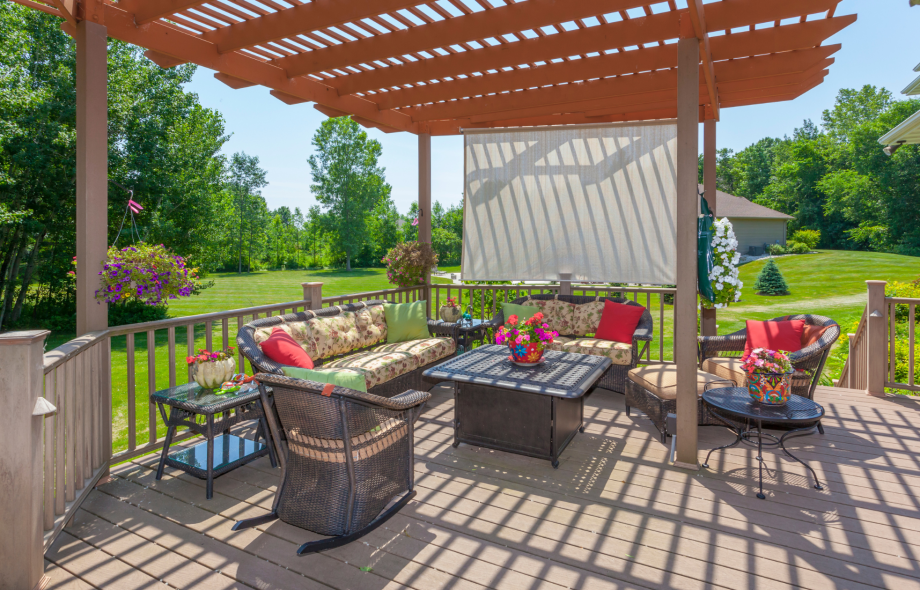Composite decking has rapidly gained popularity as a viable alternative to traditional timber decking. With its durability, low maintenance requirements, and aesthetic appeal, it’s no wonder why many homeowners and commercial property owners are turning to composite decking suppliers. However, the question remains: Is composite decking truly superior to timber? Let’s delve into the key factors to consider when making this decision.
Durability and Longevity
One of the most significant advantages of composite decking is its exceptional durability. Unlike timber, which is susceptible to rot, decay, insect damage, and splintering, composite materials are engineered to resist these elements. They are typically constructed from a blend of recycled wood fibers and high-density polyethylene (HDPE), creating a robust and long-lasting material. Composite decking can withstand harsh weather conditions, including rain, snow, and intense sunlight, without compromising its structural integrity. This durability translates into a lower maintenance burden and a longer lifespan compared to timber decking.
Maintenance and Upkeep
Timber decking requires regular maintenance to preserve its appearance and functionality. This involves cleaning, sanding, staining, and sealing to prevent rot, mold, and insect infestation. In contrast, composite decking is virtually maintenance-free. A simple cleaning with mild soap and water is usually sufficient to remove dirt and debris. Composite decking does not require staining, sealing, or sanding, saving homeowners time and effort. This low-maintenance characteristic makes composite decking an attractive option for busy individuals or those who desire a hassle-free outdoor living space.
Appearance and Aesthetics
Composite decking offers a wide range of colors, textures, and finishes to suit various design preferences. Manufacturers have perfected the art of replicating the natural beauty of wood grains and colors, creating decking that seamlessly blends with any outdoor environment. While timber decking offers a classic and timeless look, composite decking provides a contemporary and versatile aesthetic. Additionally, composite decking is available in various board widths and lengths, allowing for flexible installation and design options.
Environmental Impact
In recent years, there has been a growing emphasis on sustainable and eco-friendly building materials. Composite decking can contribute to a greener environment in several ways. Many composite decking manufacturers utilize recycled wood fibers and other recycled materials in their products, reducing the demand for virgin timber and minimizing deforestation. Additionally, composite decking is highly durable and long-lasting, reducing the need for frequent replacement and the associated environmental impact. However, it’s important to note that the environmental footprint of composite decking can vary depending on the manufacturing process and the specific materials used.
Cost Considerations
While composite decking is generally more expensive than timber decking upfront, it can be a cost-effective choice in the long run. The lower maintenance requirements, longer lifespan, and reduced need for repairs and replacements can offset the higher initial cost. Additionally, composite decking can increase the property value of a home, making it a worthwhile investment for homeowners.
Factors to Consider
When deciding between composite decking and timber, it’s essential to consider several factors:
- Personal preferences: Do you prefer the natural look and feel of timber or the modern aesthetics of composite decking?
- Maintenance requirements: Are you willing to invest time and effort into maintaining timber decking, or do you prefer a low-maintenance option?
- Budget: What is your budget for decking materials and installation?
- Environmental considerations: How important is it to you to choose an eco-friendly decking material?
- Climate: What is the climate in your region, and how will it affect the durability of the decking material?
Additional Considerations for Composite Decking vs. Timber
While we’ve explored the primary factors, there are a few additional considerations to ponder when choosing between composite decking and timber:
Safety
- Splinters: Timber decking can splinter, especially when it ages or is exposed to harsh weather conditions. This poses a safety risk, particularly for barefoot individuals. Composite decking, on the other hand, is generally splinter-free, providing a safer surface.
- Slip Resistance: The surface texture of both composite and timber decking can affect slip resistance. Some composite decking manufacturers offer textured finishes that enhance grip, making them safer in wet conditions. However, it’s essential to choose a decking material with suitable slip resistance for your specific environment.
Installation and Cost
- Installation Difficulty: Both composite and timber decking can be installed by homeowners or professionals. However, composite decking often requires specialized tools and techniques, such as hidden fastening systems. The installation costs can vary depending on the complexity of the project and the chosen materials.
- Long-Term Cost: While composite decking may have a higher upfront cost, its durability, low maintenance, and increased property value can make it a more economical choice in the long run. Timber decking, while initially less expensive, may require more frequent repairs, replacements, and maintenance, leading to higher overall costs over time.
Environmental Impact
- Recycled Materials: Many composite decking manufacturers incorporate recycled materials, such as wood fibers and plastic waste, into their products. This reduces the demand for virgin materials and helps divert waste from landfills.
- Timber Sourcing: If you choose timber decking, it’s crucial to ensure that the wood is sourced from sustainably managed forests. Look for certifications like the Forest Stewardship Council (FSC) to support responsible forestry practices.
Conclusion
Both composite decking and timber decking offer unique advantages and disadvantages. Composite decking excels in durability, low maintenance, and aesthetic versatility, while timber decking provides a classic and natural look. Ultimately, the best choice for you will depend on your individual needs, preferences, and budget. By carefully considering the factors discussed in this article, you can make an informed decision and select the decking material that best suits your outdoor living space.












